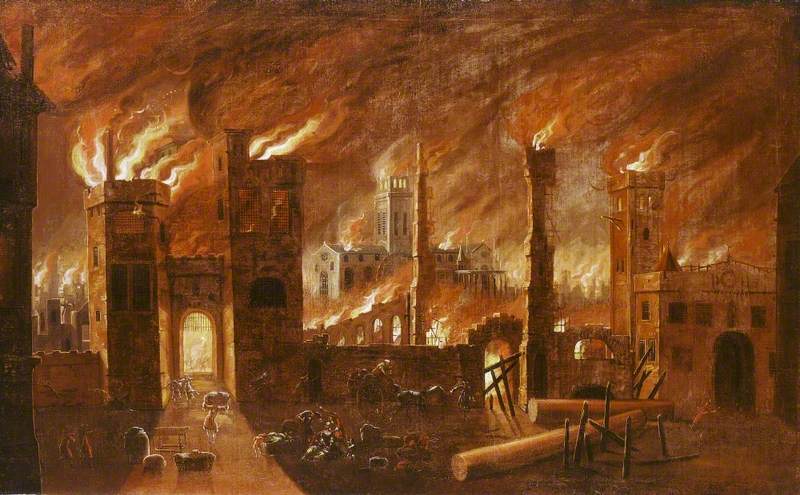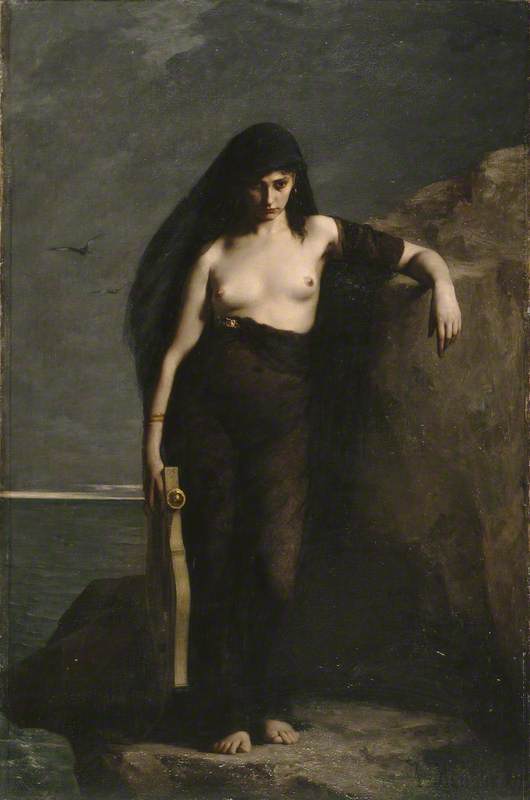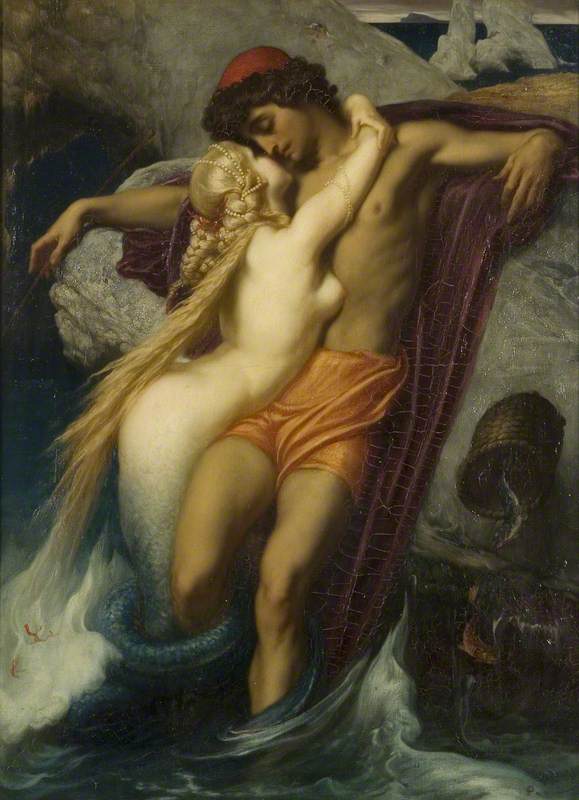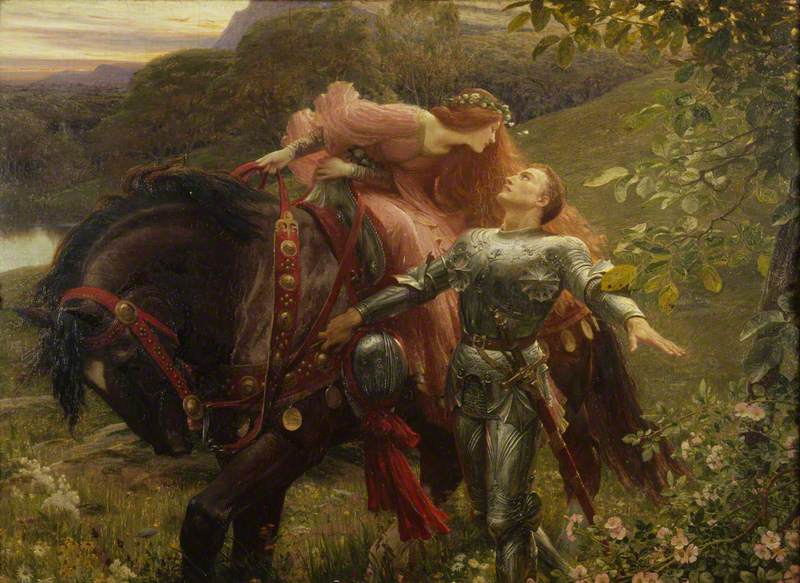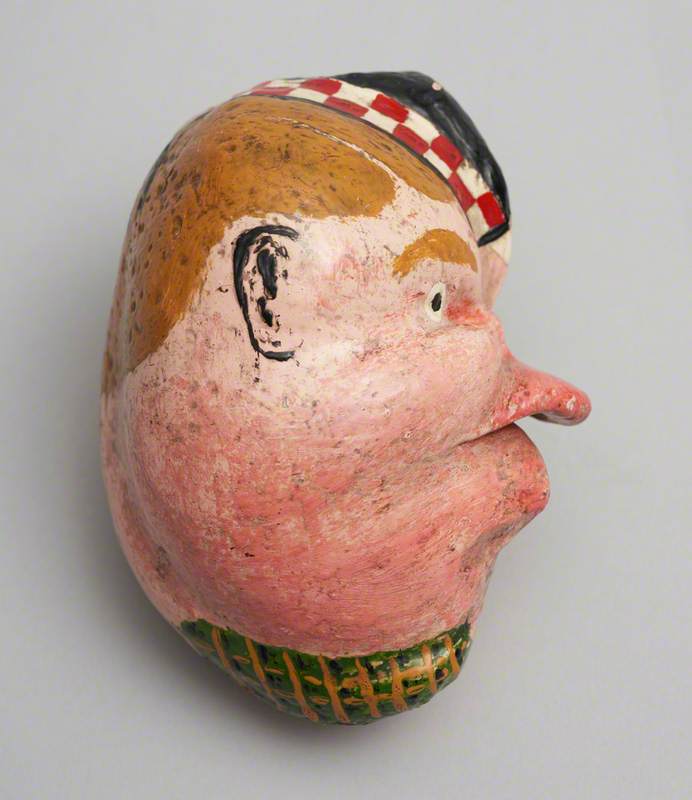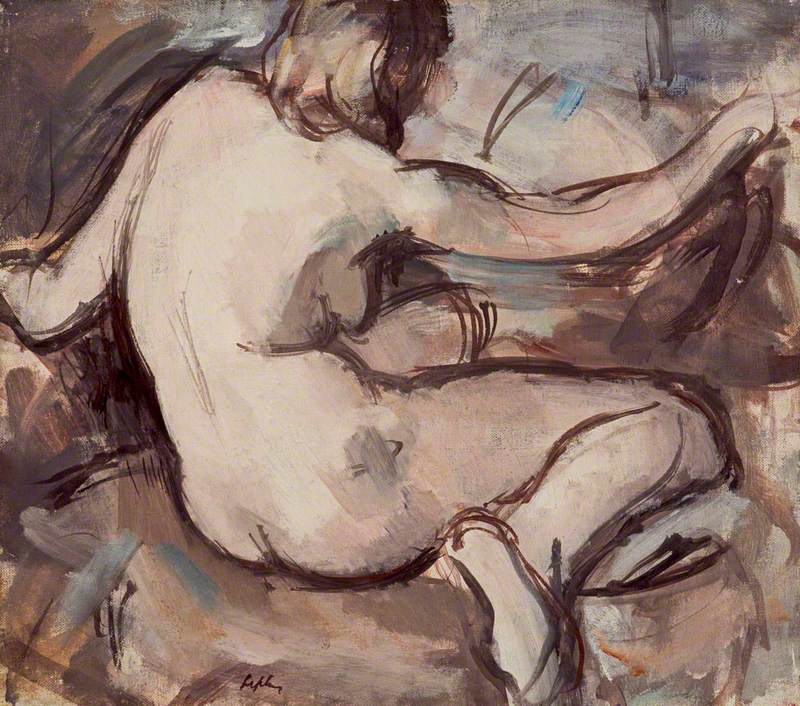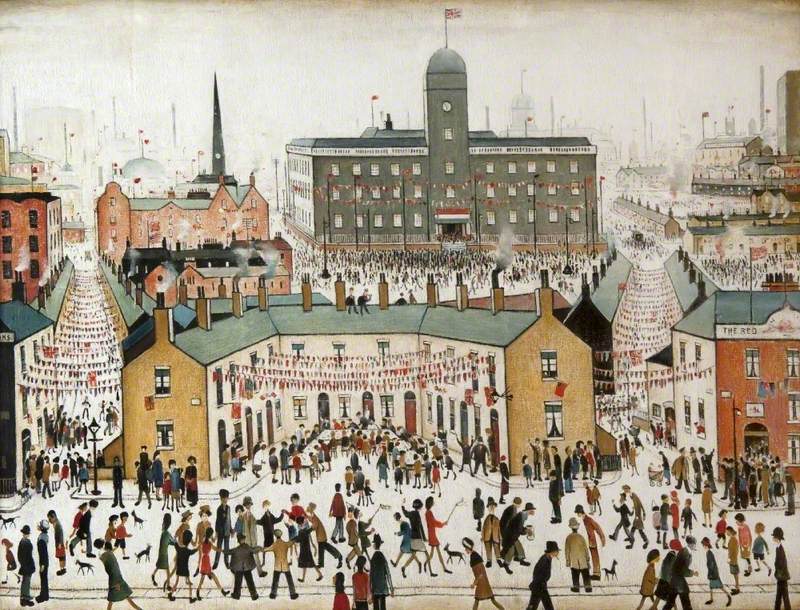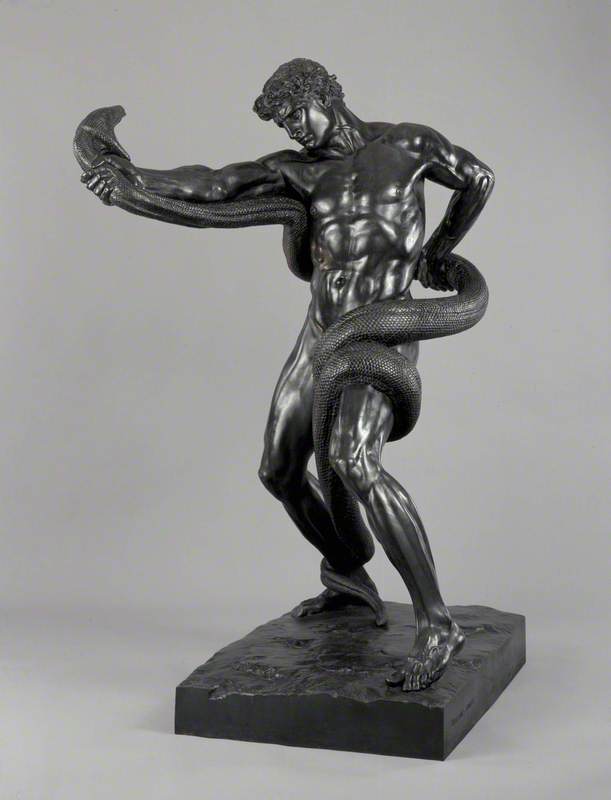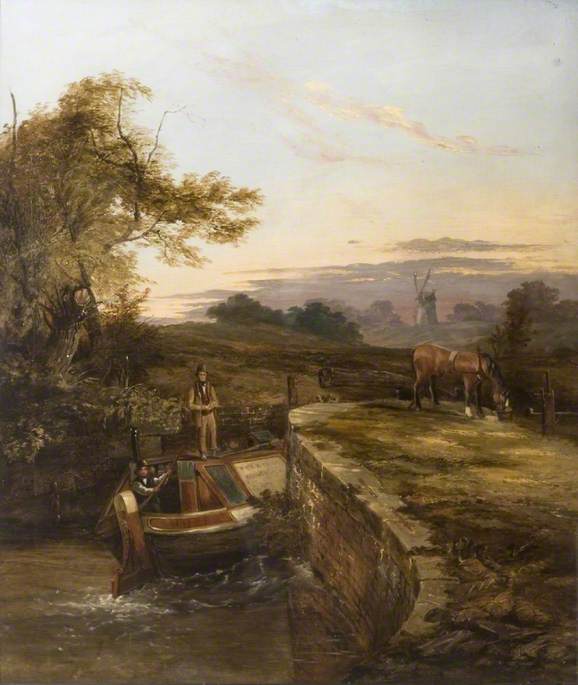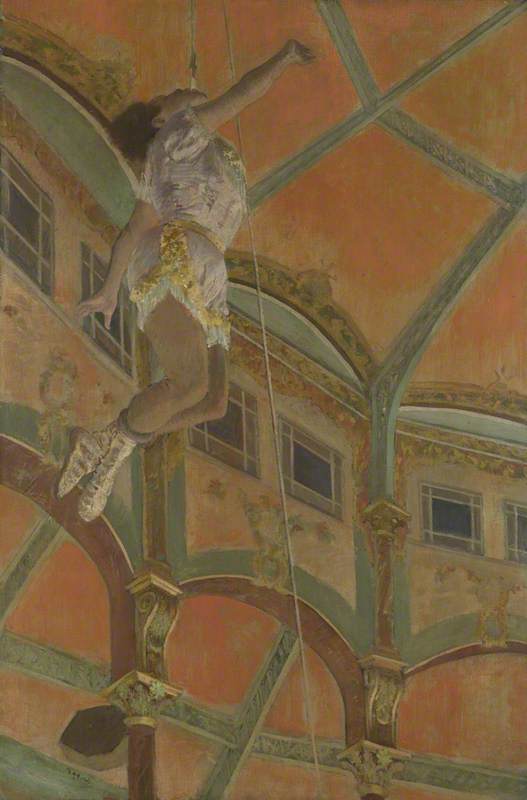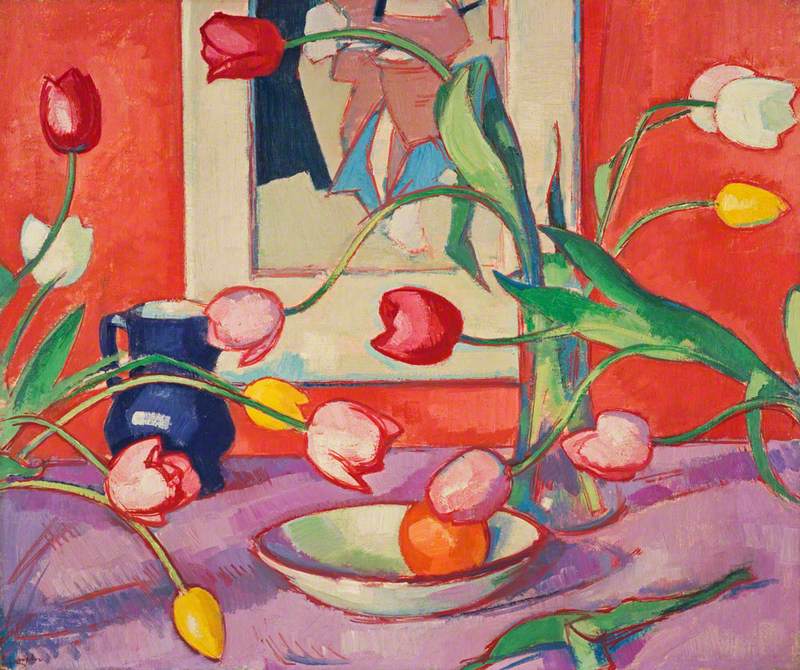So what has proved popular on Art UK over lockdown? As Art UK Director, I thought I had a sense of what I would find. For example, surely there would be some paintings of soulful isolation. Probably one work related to plague or pestilence. Perhaps a comforting depiction of sublime natural beauty or foreign lands beyond our reach. But how wrong I was. The range of works has encompassed everything from doom-laden myths to a whale eardrum. Testament to the rich variety of works on the site and interests of our audiences.
-
This is the kind of painting I was expecting
La chambre sur la cour 1907–1908Gwen John is an artist who comes to mind when thinking of seclusion and isolation. However, she is not unique here. I was amused by a recent email from an artist who said he had been rehearsing for lockdown for 68 years! Gwen John wrote ten ‘Rules to keep the world away’ in her 1912 notebook, as described in Katie McCabe’s recent article for Art UK. On her list, as Katie reports, were: 'Do not listen to people (more than is necessary)', 'Do not look at people (ditto)', 'when you have to come into contact with people, talk as little as possible'… '. But as Katie suggests, for Gwen John, solitude was a solution, it was intentional. Not forced upon her as it has been upon us.
Gwen John (1876–1939)
Oil on canvas
H 31.8 x W 21.6 cm
Yale Center for British Art
-
And without this painting by Gwen John there would not have been any works by women in this top ten. So I had to do something about that.
-
Just into the Top Ten, fire follows plague
The Great Fire of London, 1666A series of catastrophic events darkened the early years of the Restoration in which Charles II took the throne after Cromwell’s death. In 1665 the Great Plague killed up to a quarter of London’s population. 1666 brought the Great Fire of London and in 1667 the Dutch fleet sailed up the Medway and sank most of the English fleet. The plague – the last major outbreak of bubonic plague in England – had largely passed when the fire broke out on 2 September 1666. Jan Griffier I, landscape painter and engraver, was born in Amsterdam but worked in London for 23 years. He painted this dramatic reimagining of the Great Fire in 1675. The fire destroyed 13,200 houses, 87 churches and four bridges. It started close to the current Art UK office!
Jan Griffier I (c.1652–1718)
Oil on canvas
H 103.1 x W 165 cm
Museum of London
-
The most romantic painting in Britain?
Romeo and Juliet 1884Sir Francis (Frank) Dicksee was a celebrated painter of portraits and romantic historical scenes. He was influenced by the Pre-Raphaelite interest in medievalism, extreme detail and bright colour. As the twentieth century got underway he became an ardent opponent of modernism. In 1924 he was elected to the Presidency of the Royal Academy and is the second of the artists on this list to have had that role, the other being Leighton. This painting was based on an earlier Dicksee illustration for a luxury edition of Romeo and Juliet. The painting was voted the most romantic painting in the UK in 2012.
Frank Bernard Dicksee (1853–1928)
Oil on canvas
H 171 x W 118 cm
Southampton City Art Gallery
-
Poised to leap to her death
Sappho 1877Sappho was a Greek lyric poet who lived around 600BC. Born on Lesbos she is believed to have died in exile in Sicily. Thought to be prolific, little of her work has survived. She is known as a symbol of love and desire between women, with the words ‘sapphic’ and ‘lesbian’ being derived from her name and birthplace. The story goes that Sappho leapt to her death from the Leucadian rock because of her unrequited love for the young ferryman, Phaon. This moody portrayal of her seems to foretell the terrible tragedy. It is the only work by the French artist Charles Mengin on Art UK.
Auguste Charles Mengin (1853–1933)
Oil on canvas
H 230.7 x W 151.1 cm
Manchester Art Gallery
-
When will we dance again?
The Rehearsal c.1874'People call me the painter of dancing girls,' Degas told Ambroise Vollard, the art dealer. 'It has never occurred to them that my chief interest in dancers lies in rendering movement and painting pretty clothes.' As the 2011 Royal Academy exhibition ‘Dancing and the Ballet: Picturing Movement’ showed so well, Degas was a master here, with ballet being a subject he returned to throughout his life. Possibly over half his work depicts dancers. 'The Rehearsal’ was one of his first paintings of ballet. The dancer and choreographer Jules Perrot appears top right, and in other Degas paintings such as 'The Dance Class' (in the Met and Musée D’Orsay). The painting was owned for a while by Van Gogh’s art dealer brother Theo.
Edgar Degas (1834–1917)
Oil on canvas
H 58.4 x W 83.8 cm
Glasgow Life Museums
-
This does not end well
The Fisherman and the Syren 1856–1858The first of two works from Bristol Museums in this list. Frederic Leighton was made a peer by Lord Salisbury in 1896, to reflect his contribution to the arts – the first artist to be so honoured – and to broaden the membership of the House of Lords. But Leighton died almost immediately after the announcement. This early work was inspired by a poem by Goethe, ‘The Fisherman’. ‘And, lo! a dripping mermaid fair Sprang from the troubled main.’ I think you can guess where this all leads. The last lines of the poem read:
‘She sang to him, to him spake she,
His doom was fix'd, I ween;
Half drew she him, and half sank he,
And ne'er again was seen.’
Frederic Leighton (1830–1896)
Oil on canvas
H 66.4 x W 48.9 cm
Bristol Museums, Galleries & Archives
-
'Which way I fly is hell'
Satan Summoning His Legions 1796/1797This towering work – over 4m high – greets you when you enter the RA's permanent collection. Once you have conjured with what is happening with the judiciously placed drapery, you are surprised to see it is by Thomas Lawrence, better known for his portraits. Lawrence was an admirer of Milton and this work takes for its subject the line 'Awake, arise, or be for ever fallen' from Paradise Lost. Shown at the 1797 RA Annual Exhibition, it prompted critical reaction. 'The frequency with which we have been annually compelled to notice the daring folly of our callous Artistes, in assuming the baton of an historical Painter, before they had even a common knowledge of the human anatomy, has filled us with regret, …', said one critic.
Thomas Lawrence (1769–1830)
Oil on canvas
H 431.8 x W 274.3 cm
Royal Academy of Arts
-
'Alone and palely loitering'
La belle dame sans merci exhibited 1902Frank Dicksee is the only artist to have two works in this top ten. ‘La belle dame sans merci’ or ‘The Beautiful Lady without Pity’ is probably the artist’s most famous work.
The subject is taken from the 1819 poem of the same name by John Keats. In this poem, a knight is found ‘Alone and palely loitering’. The knight, ‘so haggard and so woe-begone,’ relates his tale of meeting the eponymous lady. How he made a garland for her hair and set her on his ‘pacing steed’. As with the Fisherman above, it doesn’t end well, with the knight being left alone in a cave tormented by nightmares. Other artists including John William Waterhouse and Arthur Hughes also painted works based on the poem.
Frank Bernard Dicksee (1853–1928)
Oil on canvas
H 137.2 x W 188 cm
Bristol Museums, Galleries & Archives
-
So what is going on here?
Painted Whale Eardrum 20th CThe reason why this painted whale eardrum is third on the list is that it was featured in Yorkshire Museum's Curator Battle on Twitter for the creepiest exhibit. Trinity House in Leith, where this piece is housed, is the headquarters of the charity and incorporation of Shipmasters and Mariners, an organisation with its roots in the fourteenth century. Leith has a proud maritime history and the charity supported the needs of retired mariners and their families. Trinity House's collection of maritime objects includes a small number of paintings and sculptures on Art UK. The eardrum bone can be seen to resemble a cartoonish human head, and sailors were known to paint them with faces and hats. This one is thought to be twentieth century.
unknown artist
Bone
H 12 x W 7 x D 6 cm
Historic Environment Scotland
-
And the runner up is...
Little Nude c.1927–1930If you had been expecting one of Peploe’s exuberantly colourful flower paintings or a calming view of Iona, silent and still under bright northern light, then this might surprise you. There are 200 paintings by Peploe on Art UK of which only four are nudes. Whilst he drew from the life model throughout his career, the nude was only the focus of his paintings at the start and end of his life. This work was painted in the last eight years of his life and shows an assured depiction of the human form and movement, in an unusually restrained palette. This painting also happens to be the most viewed painting on Art UK in the last 12 months.
Samuel John Peploe (1871–1935)
Oil on canvas
H 40.5 x W 45.8 cm
National Galleries of Scotland
-
But the number one spot goes to Lowry
VE Day 1945Lowry famously refused honours during his lifetime, including a knighthood from Harold Wilson, with Lowry saying it no longer mattered as his mother was dead. However, in this list he takes the honour for being the most viewed artwork on Art UK over lockdown. This work shows the day of celebration to mark the end of war in Europe in 1945, which was commemorated only a few weeks ago. In the foreground the lively celebration spreads symmetrically up the two terraced streets festooned with bunting. However, factories and mills loom over the festivities, a reminder that work (and rebuilding the economy) resumes the following day. Note the two men perched precariously on the roof at the front.
Laurence Stephen Lowry (1887–1976)
Oil on canvas
H 78.7 x W 101.6 cm
Glasgow Life Museums
-
Putting up the bunting again
One day the world will return to normal. Now that would be a cause for celebration.
-
Endnote
The works in this list are drawn from our data over the period between 24th March and 14th May.
I am grateful to my colleagues Andrew, Flora and Lydia for their help here.

